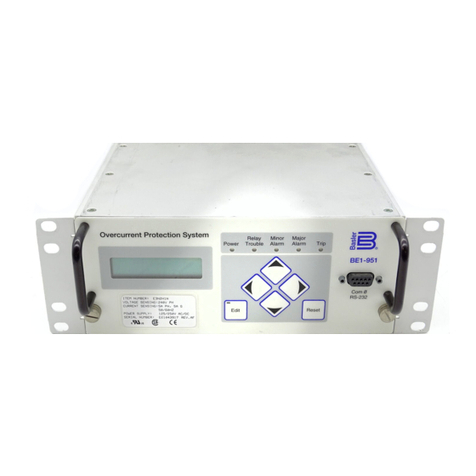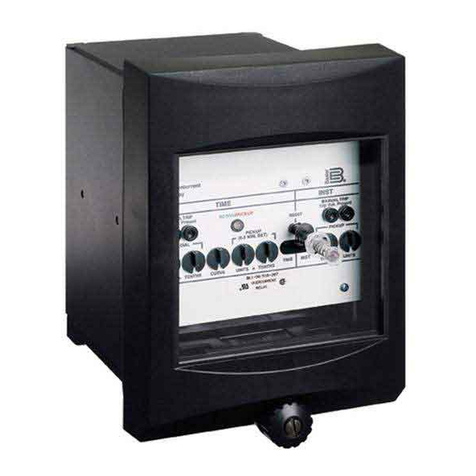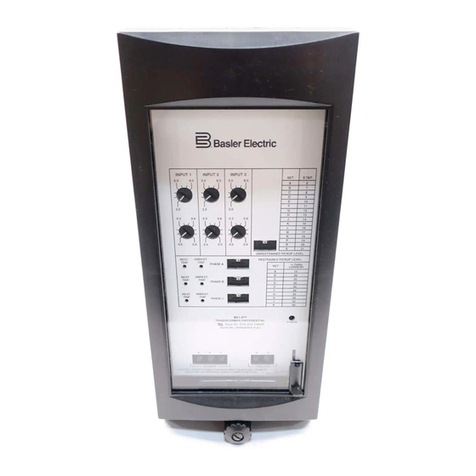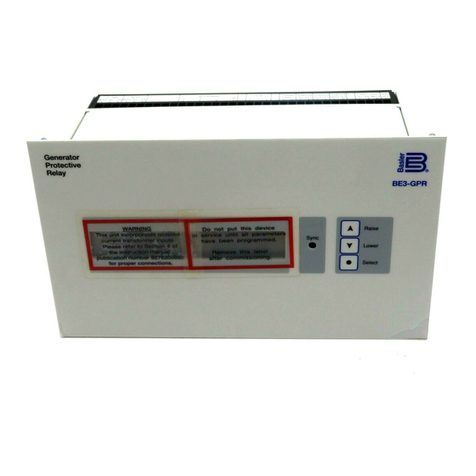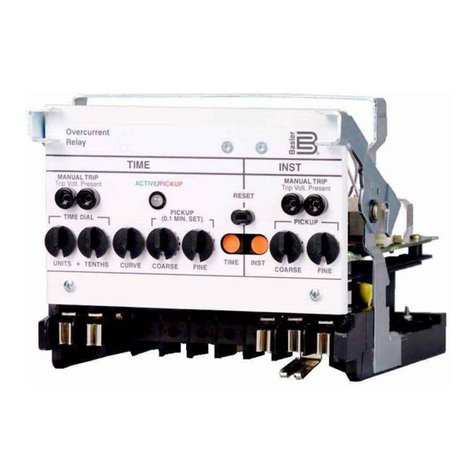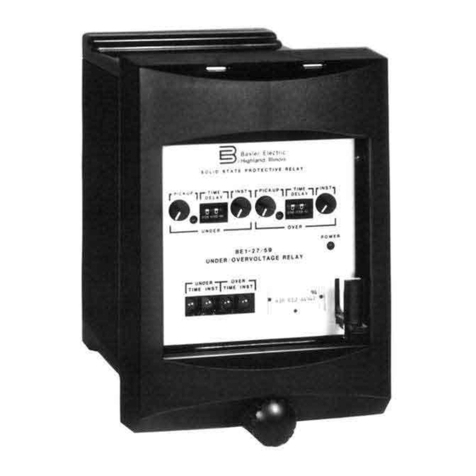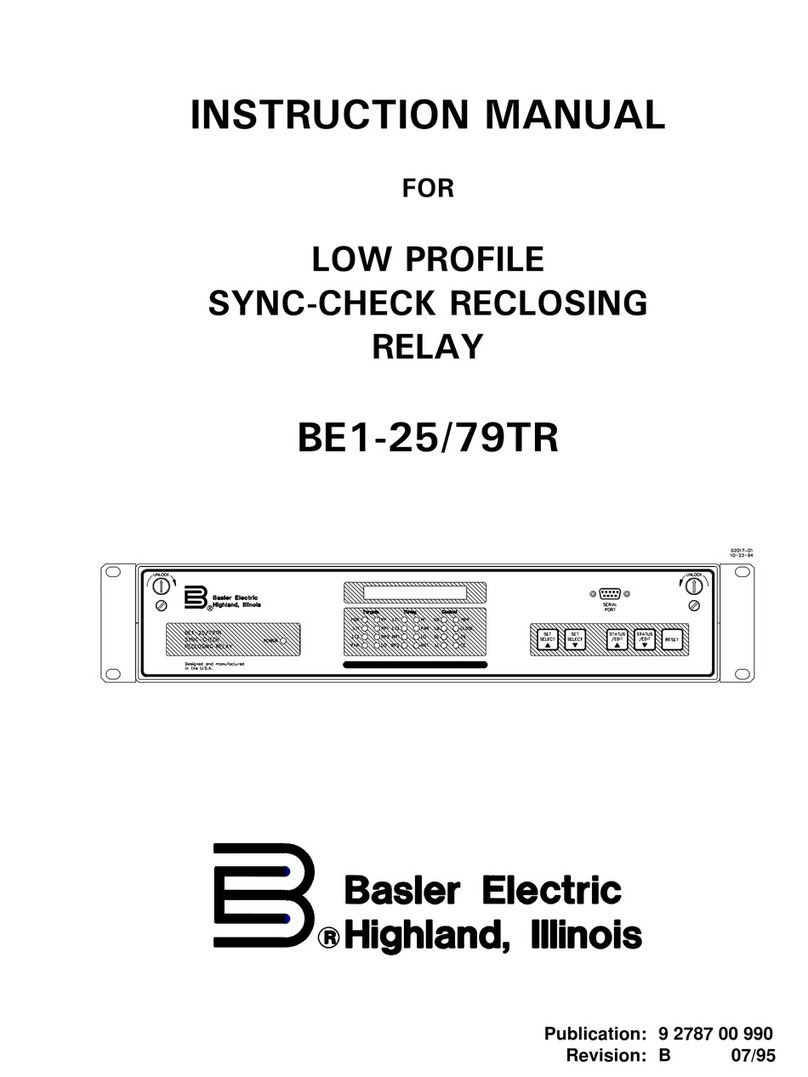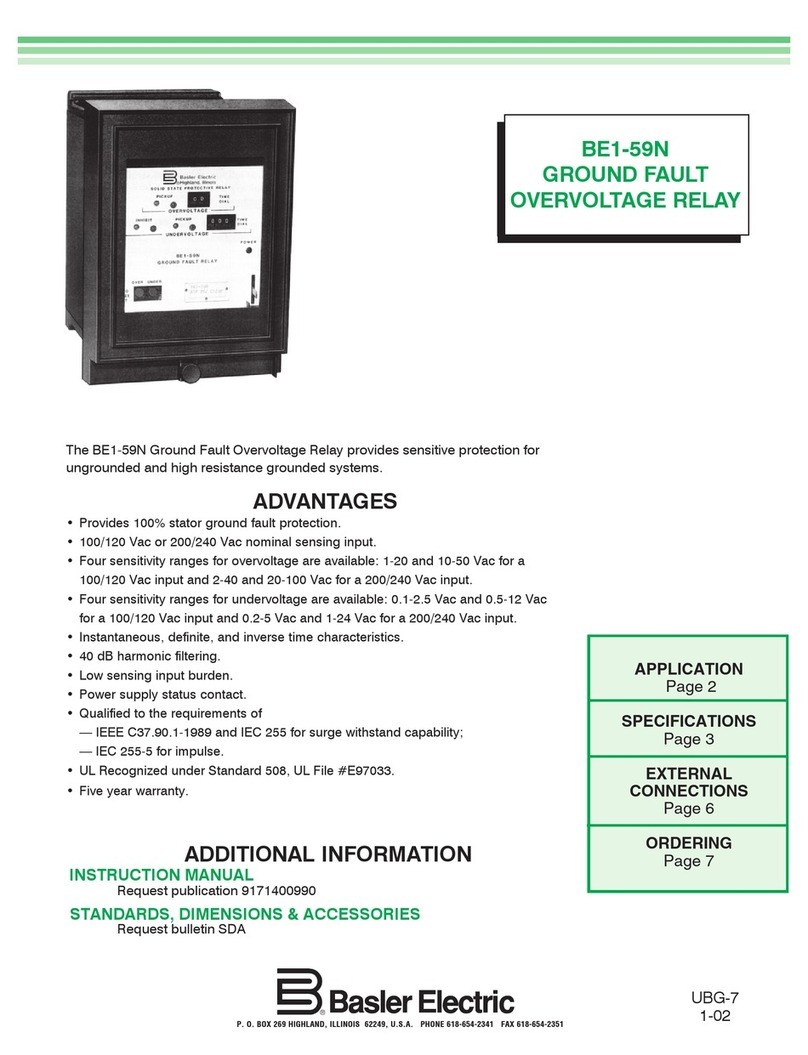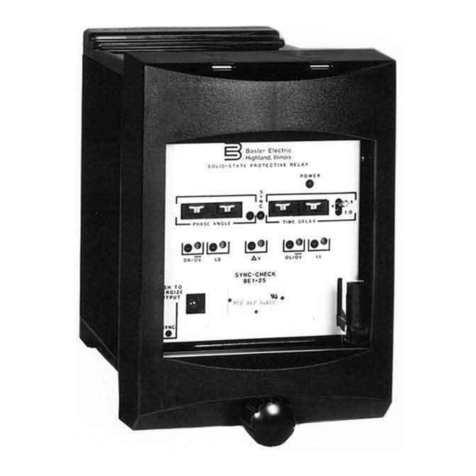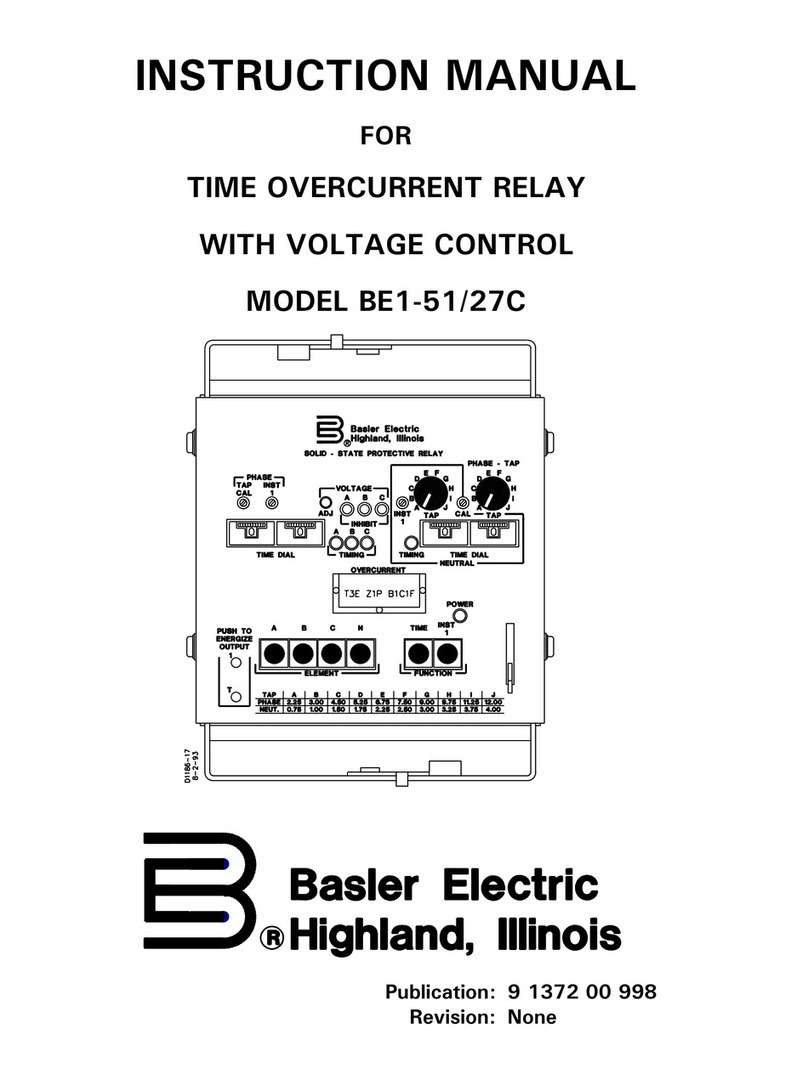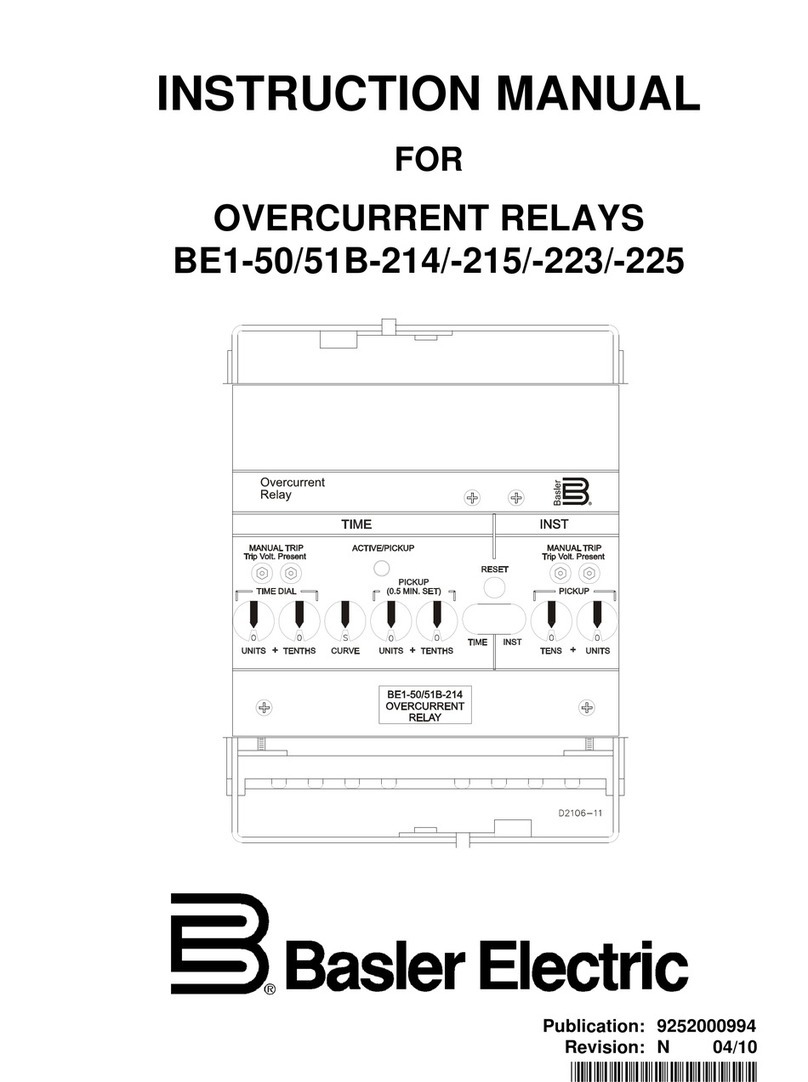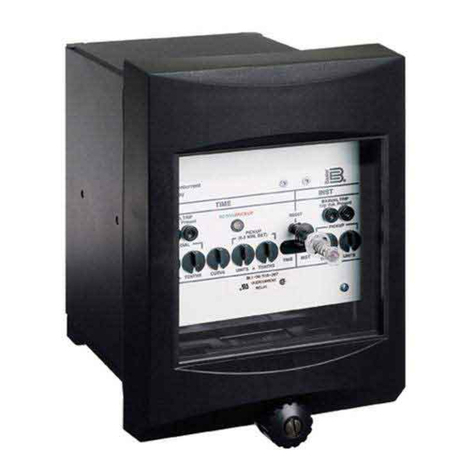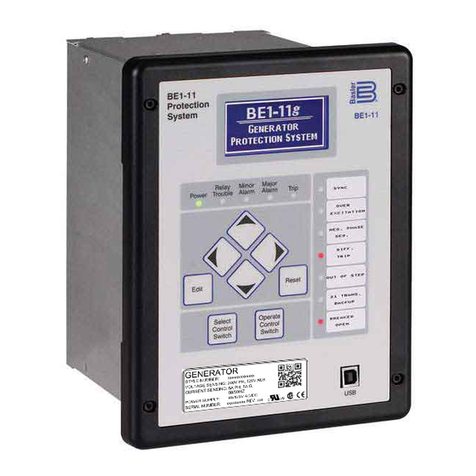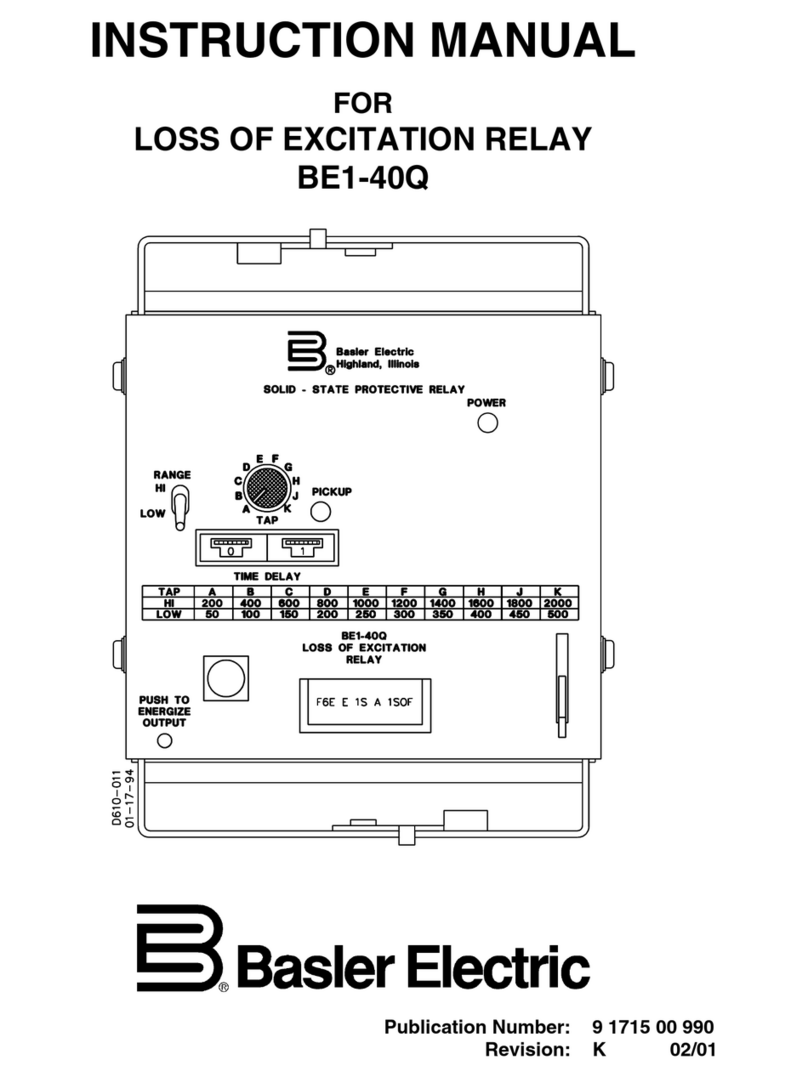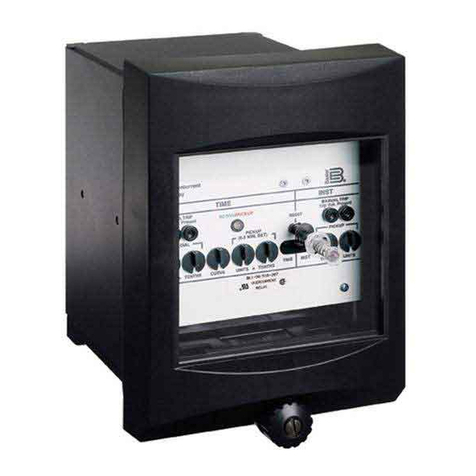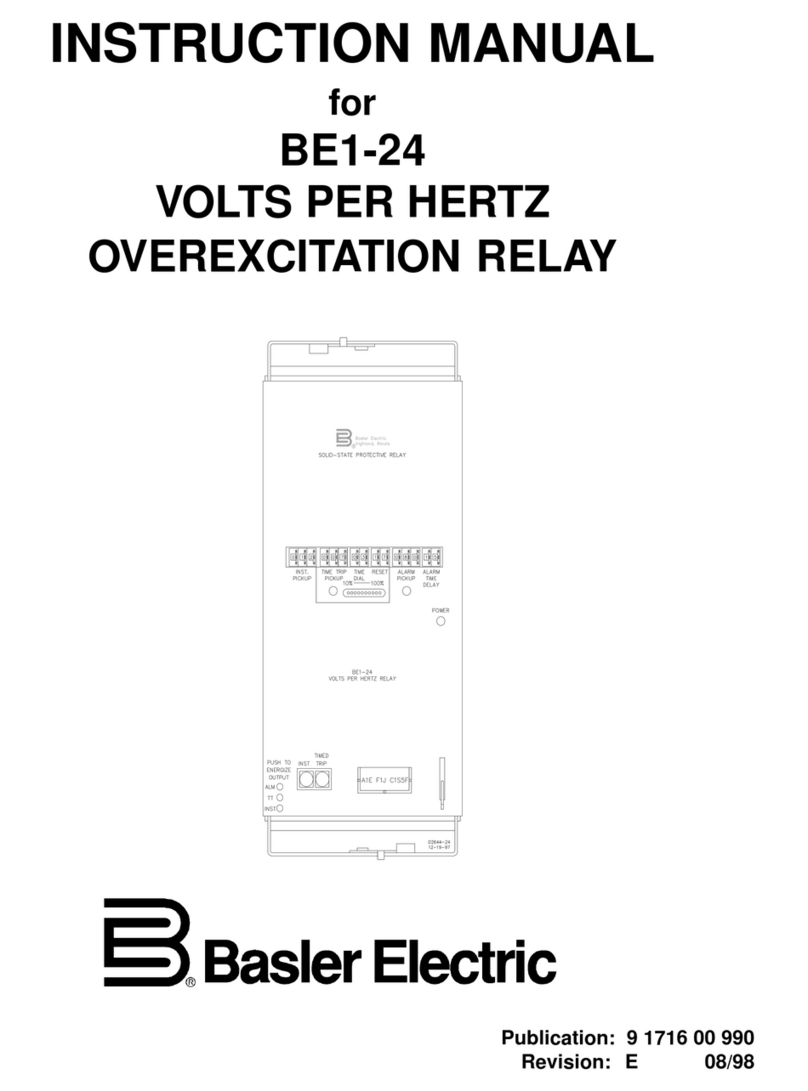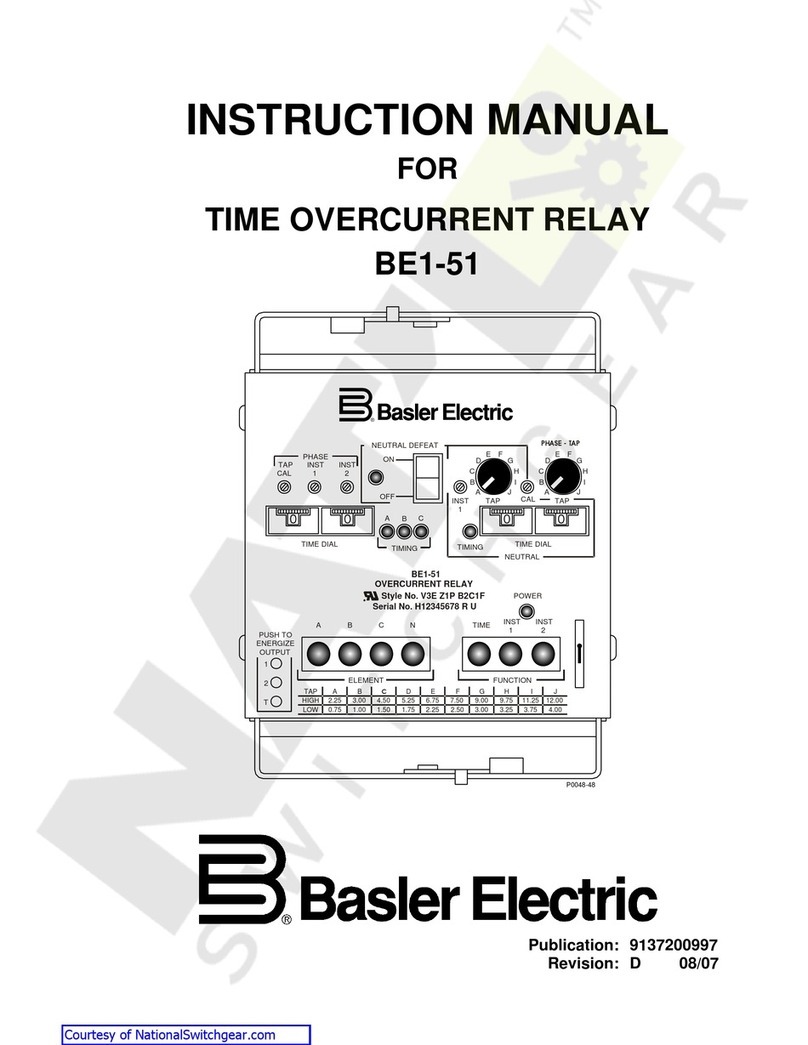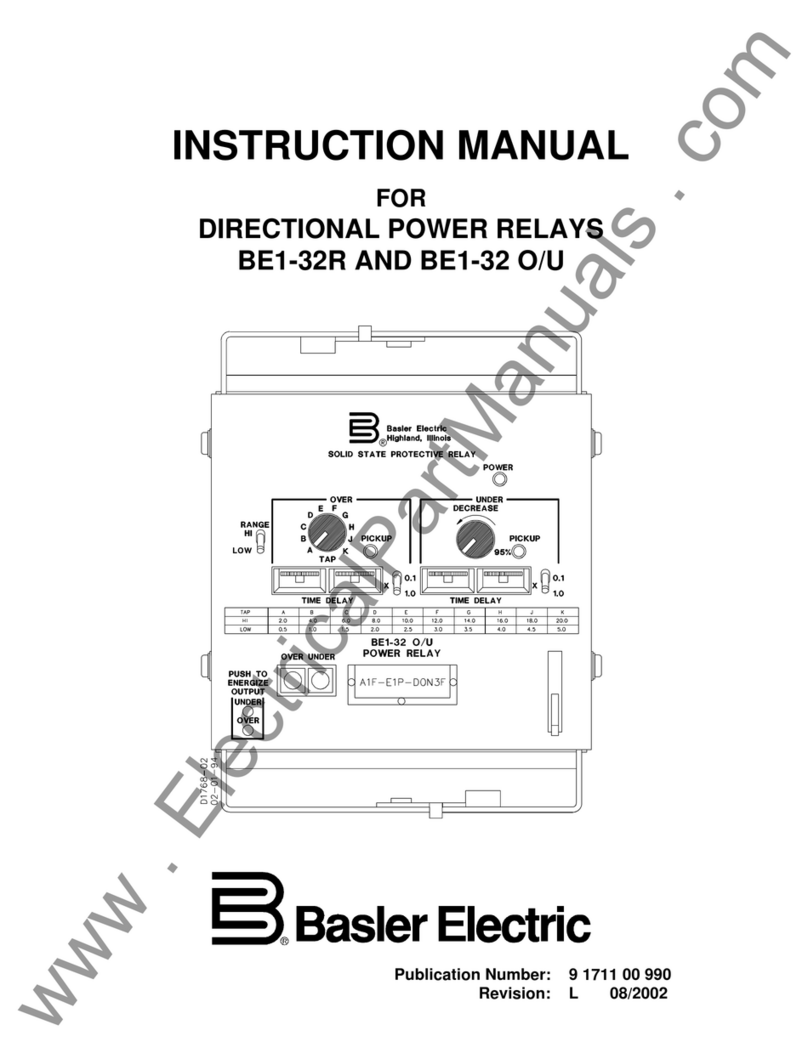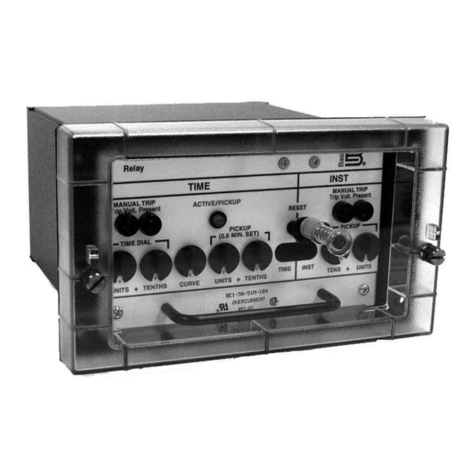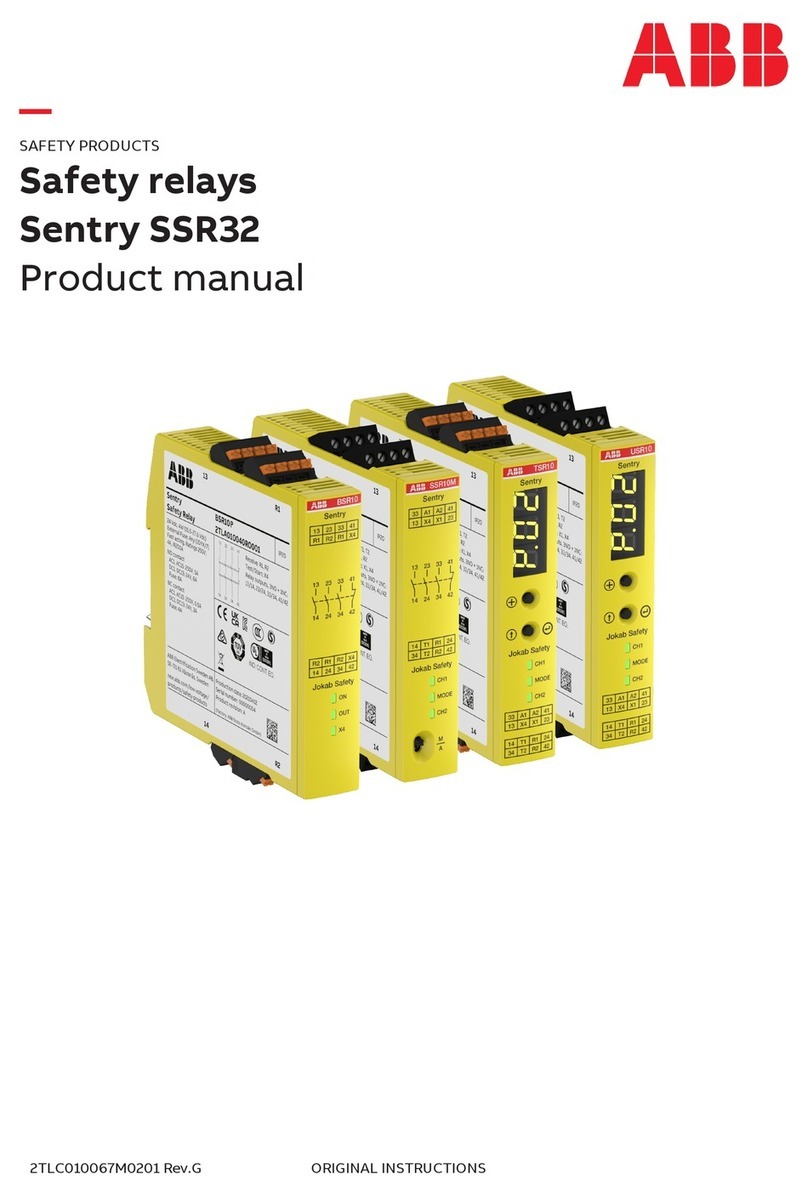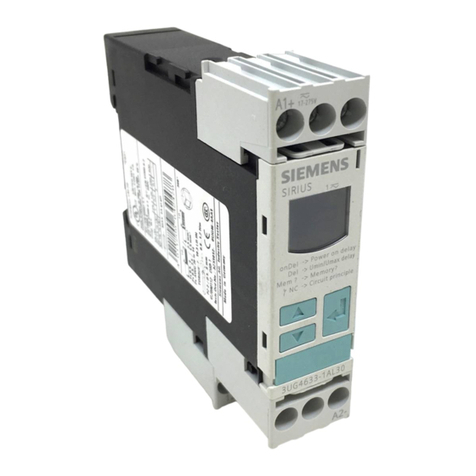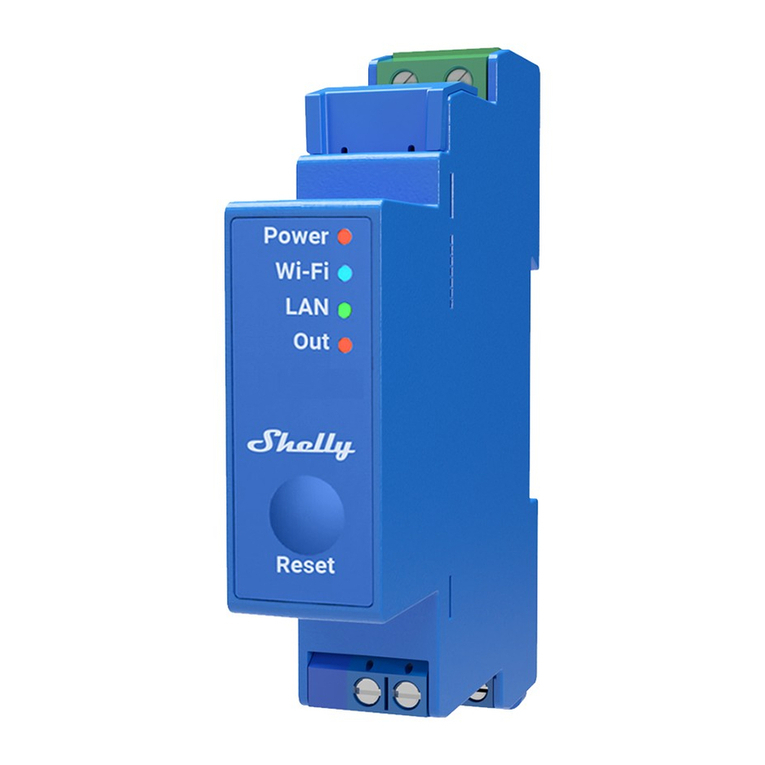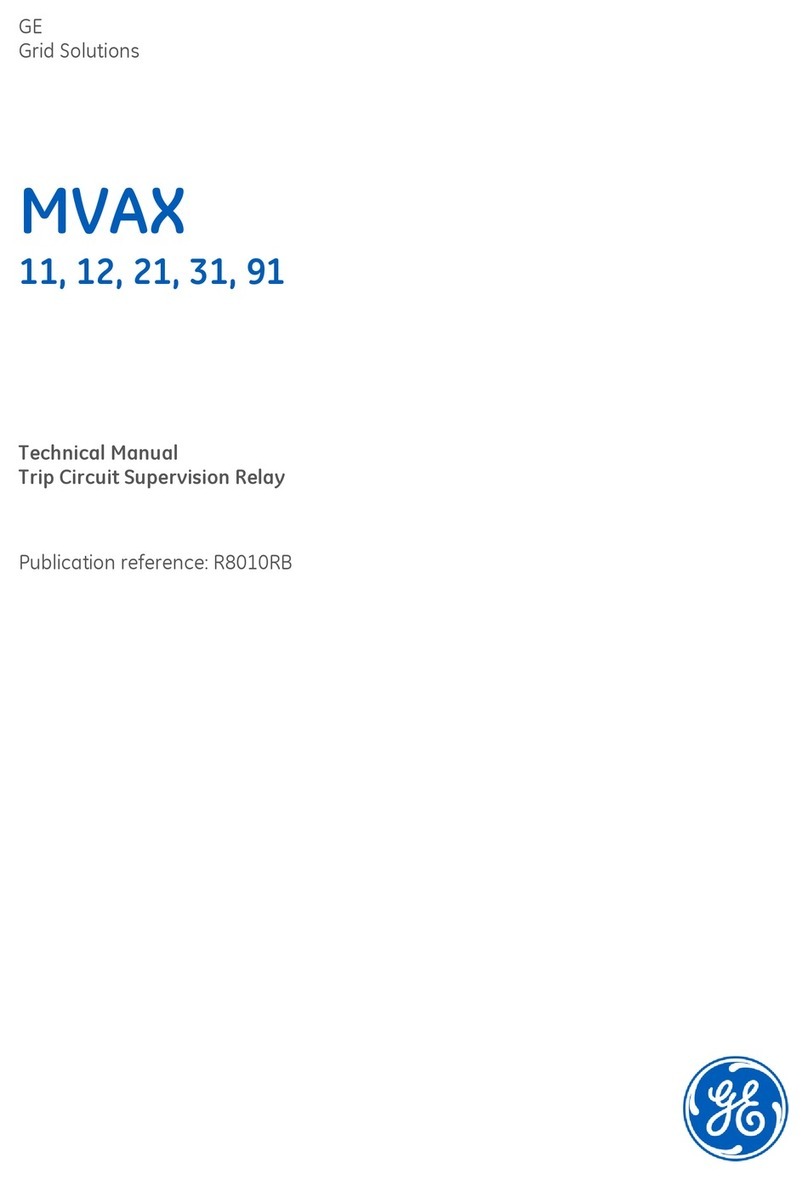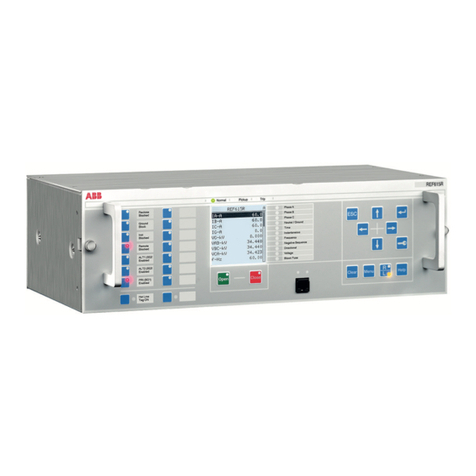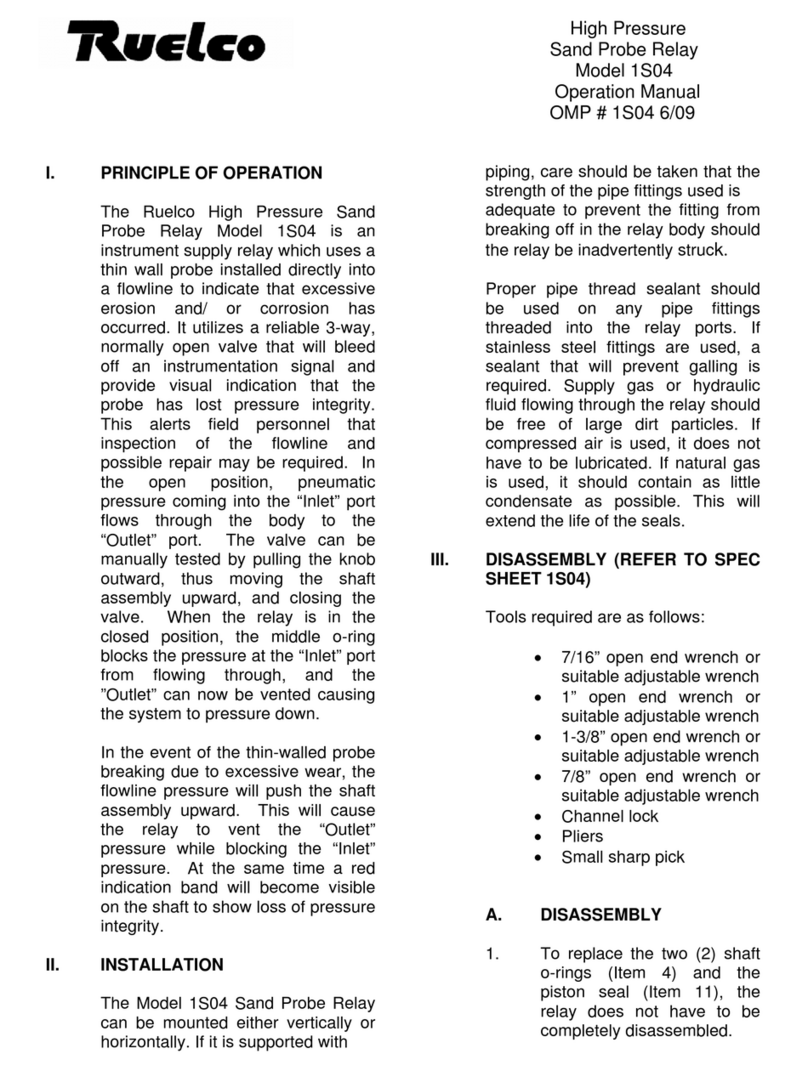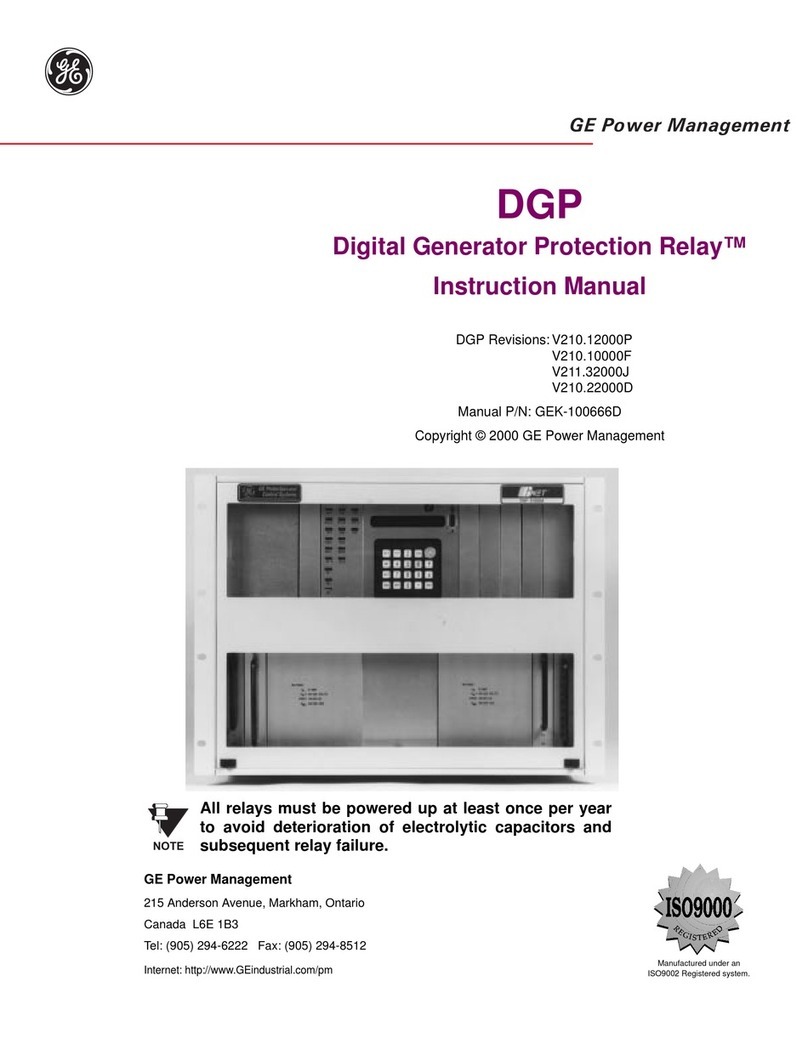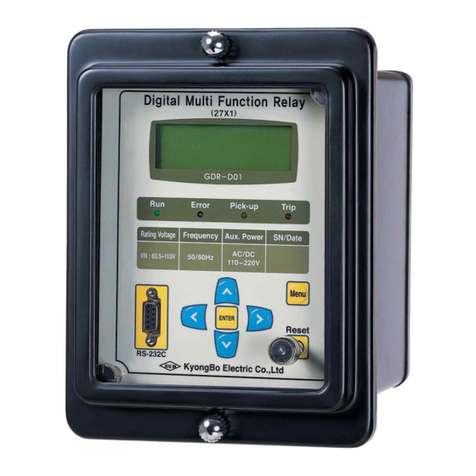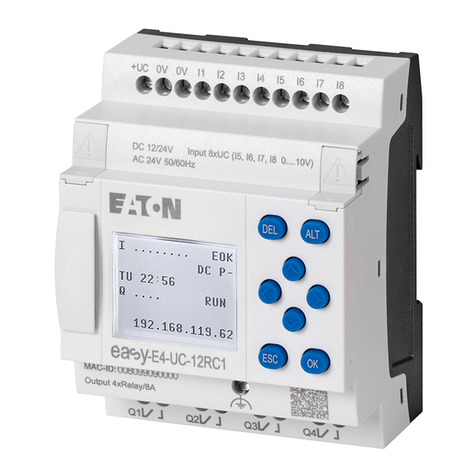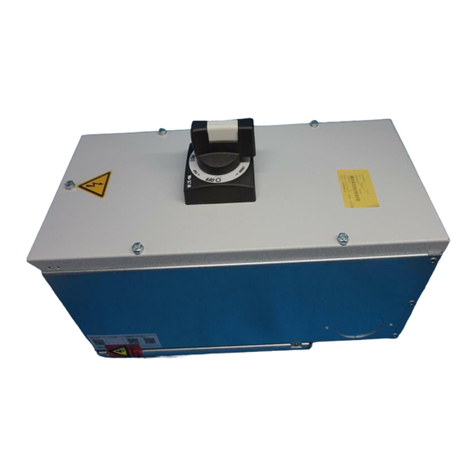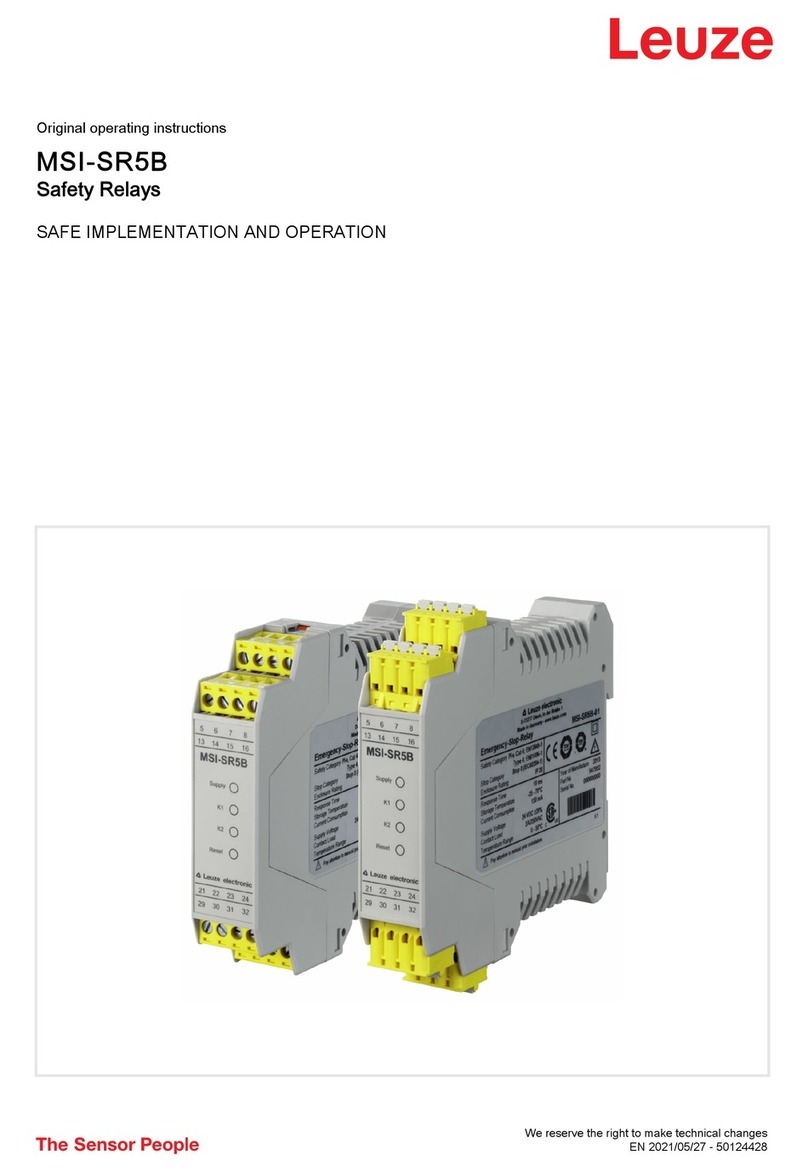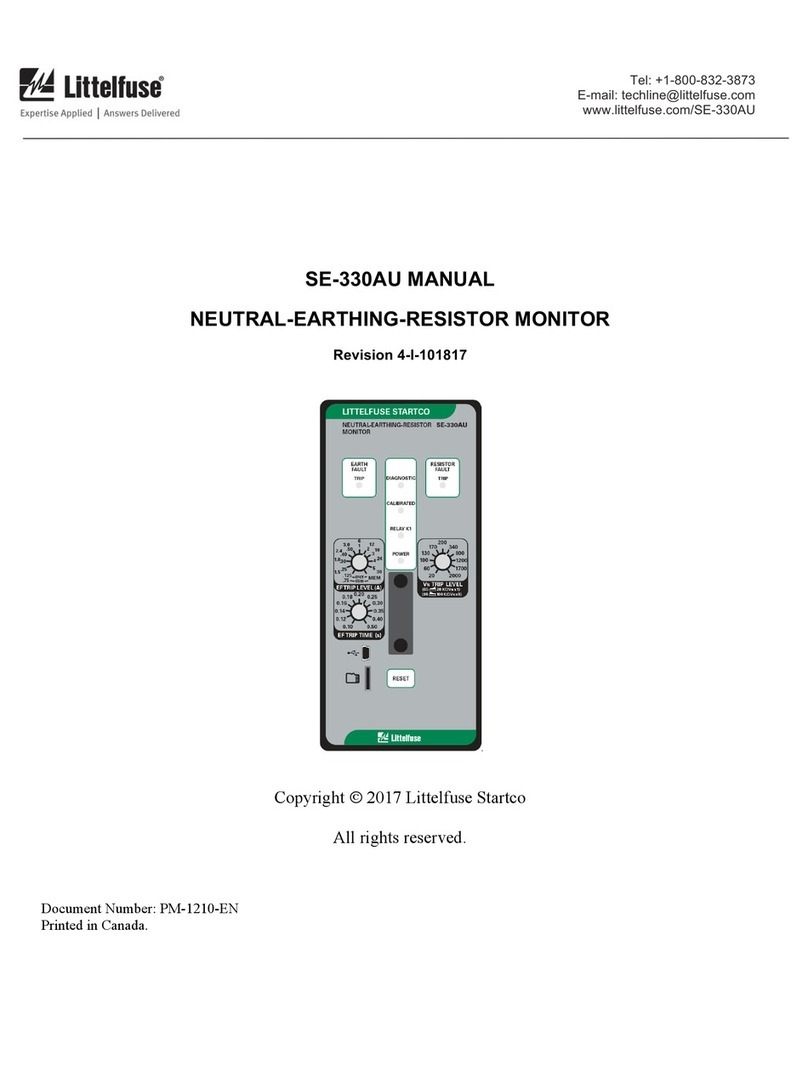
9171400990 Rev G BE1-59N Introduction v
CONTENTS
SECTION 1 •GENERAL INFORMATION................................................................................................ 1-1
PURPOSE........................................................................................................................................... 1-1
APPLICATION .................................................................................................................................... 1-1
High Resistance Grounding.......................................................................................................... 1-1
Ungrounded Systems................................................................................................................... 1-2
MODEL AND STYLE NUMBER.......................................................................................................... 1-2
Style Number Example................................................................................................................. 1-3
SPECIFICATIONS.............................................................................................................................. 1-4
Voltage Sensing Inputs................................................................................................................. 1-4
Undervoltage Sensing Input Range ............................................................................................. 1-4
Pickup Accuracy........................................................................................................................... 1-4
Dropout......................................................................................................................................... 1-4
Timing Characteristics.................................................................................................................. 1-4
Output Contacts............................................................................................................................ 1-4
Power Supply................................................................................................................................ 1-5
Target Indicators........................................................................................................................... 1-5
Type Tests.................................................................................................................................... 1-5
Physical ........................................................................................................................................ 1-6
Agency Recognition/Certification ................................................................................................. 1-6
SECTION 2 •CONTROLS AND INDICATORS ....................................................................................... 2-1
INTRODUCTION................................................................................................................................. 2-1
SECTION 3 •FUNCTIONAL DESCRIPTION........................................................................................... 3-1
INTRODUCTION................................................................................................................................. 3-1
INPUTS............................................................................................................................................... 3-1
FILTERS ............................................................................................................................................. 3-1
OVERVOLTAGE COMPARATOR...................................................................................................... 3-1
DEFINITE TIME DELAY (OPTIONAL)................................................................................................ 3-1
INVERSE TIME DELAY (OPTIONAL)................................................................................................ 3-2
REFERENCE VOLTAGE CIRCUIT.................................................................................................... 3-2
UNDERVOLTAGE ELEMENT (OPTIONAL)....................................................................................... 3-2
Undervoltage Operation ............................................................................................................... 3-2
Undervoltage Inhibit...................................................................................................................... 3-2
OUTPUTS........................................................................................................................................... 3-2
PUSH-TO-ENERGIZE
OUTPUT PUSHBUTTONS............................................................................ 3-2
POWER SUPPLY STATUS OUTPUT................................................................................................ 3-3
POWER SUPPLY ............................................................................................................................... 3-3
TARGET INDICATORS ...................................................................................................................... 3-3
Internally Operated Targets.......................................................................................................... 3-3
Current Operated Targets ............................................................................................................ 3-3
SECTION 4 •INSTALLATION.................................................................................................................. 4-1
INTRODUCTION................................................................................................................................. 4-1
RELAY OPERATING GUIDELINES AND PRECAUTIONS ............................................................... 4-1
MOUNTING......................................................................................................................................... 4-1
CONNECTIONS.................................................................................................................................. 4-9
MAINTENANCE................................................................................................................................ 4-12
STORAGE......................................................................................................................................... 4-12
SECTION 5 •TESTING ............................................................................................................................ 5-1
INTRODUCTION................................................................................................................................. 5-1
OPERATIONAL TEST ........................................................................................................................ 5-1

